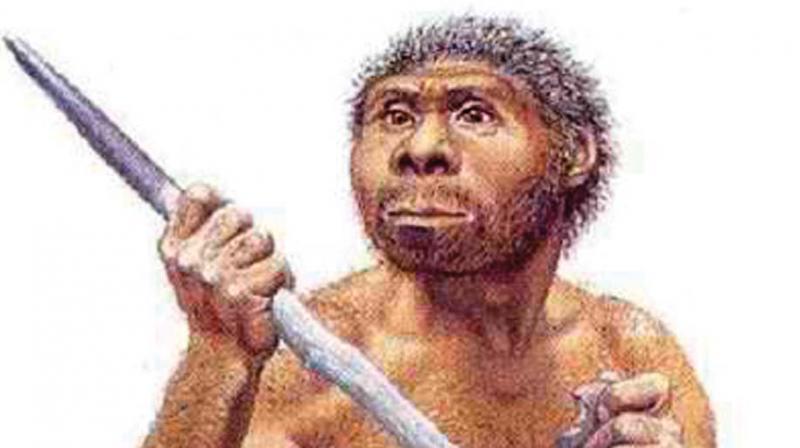Kottayam: New research finding on origin of language
Evolution of language can be better understood by analysing utility of tools, says neuroscientist.

KOTTAYAM: It is possible to better understand the origin and the evolution of language by analysing the utility of the tools. The transformation of primitive grunts and howls in the ape-like ancestors of human beings might have inspired the evolution of tool-use, according to a study conducted at the University of California, San Diego.
The research was conducted under the leadership of Dr V.S. Ramachandran, director, centre for brain and cognition at the University of California. "Following the lead of other researchers, including Mike Corballis and Merlin Donald, we found that by exploring the events that culminated in tool-use, one can reason how the same circuits may have been refashioned for analogous computations in language," Dr Ramachandran told Deccan Chronicle in an exclusive interview at his home in Chennai.
Dr. Ramachandran, who visits India annually, is a recipient of Padma Bhushan and one of the 100 most important people in the world listed by Time magazine in 2011.
He said that very early in primate evolution, man learnt to use randomly scattered rocks to chop marrow and meat and later there was an attempt to shape the rock by hitting it with another to produce a sharp-edged achulian hand axe, which in turn was tied to a handle.
These two steps were almost like magic, since they involve imagery, the ability to conjure up the visual image of an intended tool, and use that as a template for hitting your rock and binding it to a twig.
“According to our research, this ape was able to juggle and shuffle around the internal image of a stone head simultaneously with the rope and stick and could combine two unrelated things ( axe and handle ) to create a totally new tool - the axe.
This was the dawn of the origin of language. Furthermore, the hierarchical embedding of clause within clause – e.g. Sheela (the girl who hit George) went to school,–thought to be the hallmark of human language uniqueness, may have cannibalised the same to use circuits and retooled it for syntax,” Dr Ramachandran said.
Intonation on the other hand evolved in the right hemisphere of the brain, independent of grammar, probably had a major role in conveying subtle nuances of emotion and meaning (e.g. there are 9 ways you can say ‘really’). In fact, early in primate evolution, only “primordial language” of intonation and gesturing existed in the right hemisphere.
A parallel line of research was conducted among the two percent of the people who have a brain oddity called calendar synaesthesia.
“They can visualise a calendar in front of them without actually seeing a calendar, including font style and size of calendar names. Unlike normal human beings like us, who only see a vague rectangle with January top left and December bottom right, these people have calendars with strange shapes like hoolahoops or circles around the waist or an L shape.
Dr Ramachandran added that the research also led him to find that the human brain is fundamentally different from the brains of other animals, e.g of a cow, cat or even a chimpanzee since the human brain has the power to visualise the forthcoming event and juxtapose the seemingly unrelated objects in the visual field to conceive of what might be true.
Whereas the brain of the aforesaid animals can only see the things ( e.g. a horse or a bird ) etched in their mind from the time when they had actually seen the creature, they can only visualise the animal which they have seen, i.e. a horse or a bird. However, human brain can visualise unlikely combinations, including a flying horse or pegasus which is different from what is etched in the brain, he says.
“This is one major difference between the human brain and the brain of other animals that it has the capacity to anticipate the forthcoming events or to be specific to imagine. Other animals probably have one each of the many things we are especially good at - but the combined deployment of many of them probably occurred fortuitously in human evolution,” he says.
“The near simultaneous fortuitous emergence of several traits and equally fortuitous synergistic interactions between them culminated in our extraordinary off- scale abilities,” he says.
Dr. Ramachandran is a fellow of All Souls (Oxford ) and the Royal Institution which honoured him with the Henry Dale medal. He also delivered the prestigious Reith lecture on BBC ( begun by Bertrand Russel ) and Gifford lectures.

